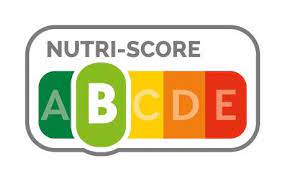Homemade Rhubarb Yogurt
- Benedetta Andreotti
- Apr 26, 2021
- 2 min read
Updated: Jun 25, 2021
A best of Britain, seasonal spring delight!

Nutrition:
Rhubarb is a vegetable of Chinese origins and it is traditionally used as medicine. It is known for its laxative properties and its beneficial effects on gastrointestinal and chronic liver diseases. It protects liver from oxidation, fibrosis and cirrhosis, due to its anthraquinone compounds. Meanwhile, it is interesting to acknowledge that the long-term administration of rhubarb has the opposite effect. It causes hepatotoxicity, due to the release of anthraquinone compounds such as Aloe-emodin and emodin that in high concentrations are toxic. The leaves need to be avoided as they contain the highest amount of oxalic acid. As a result, they are toxic and can even be fatal. Rhubarb can be red, partially red or green. The deeper the red, the more flavour the stalks. We suggest you choose firm stalks which are not shrivelled or limp and always discard the leaves.
As well as protecting the liver, the anthraquinone compounds of rhubarb also protect against cancer, particularly colon cancer. These bioactive agents induce apoptosis of human hepatoma cells through a complex pathway. From a nutritional point of view, rhubarb is a great source of vitamin K, C and calcium. Vitamin K is important for blood clotting and bone health, while vitamin C is important for the immune system and for collagen formation. It also enhances iron absorption, which is a mineral that is suboptimal in many women due to menstruation. Finally, rhubarb is a good source of calcium. When combined with yogurt, which is also a naturally rich source of calcium, will give you an extra strength to your bones and teeth!
What You Need:
135 g of semi-skimmed milk
15 ml of yogurt with live cultures
102 g of rhubarb
19.5 g of sugar
Allergens: Milk
Health Claims: A source of vitamin B12



Method:
YOGURT
Pour the milk into a pot and heat until it comes to boil.
If you have an instant read cooking thermometer, use this to measure the temperature until your milk is at 180 degrees.
If you do not own an instant read cooking thermometer, take your milk off the heat once it comes to boil.
Let your milk cool for 20 minutes.
In a bowl, add one tablespoon of yogurt with live cultures.
Add two tablespoons of your milk to the yogurt.
Put this mixture back into the larger milk substance.
Leave in a warm environment for 10-12 hours.
Your yogurt is now ready
RHUBARB JAM
Remove the leaves from your rhubarb, wash and then cut your rhubarb in small pieces.
Place them in a pot and add your sugar.
Let it heat until your rhubarb becomes a jam.
In a separate bowl, add your yogurt and pour one tablespoon of your jam on top of your yogurt.
Serve



Comments